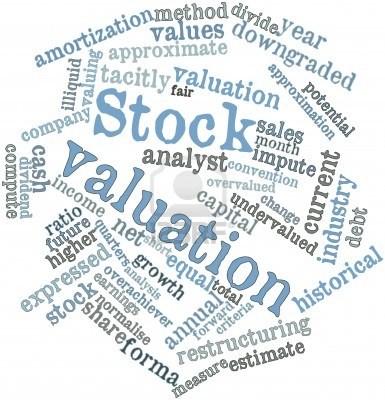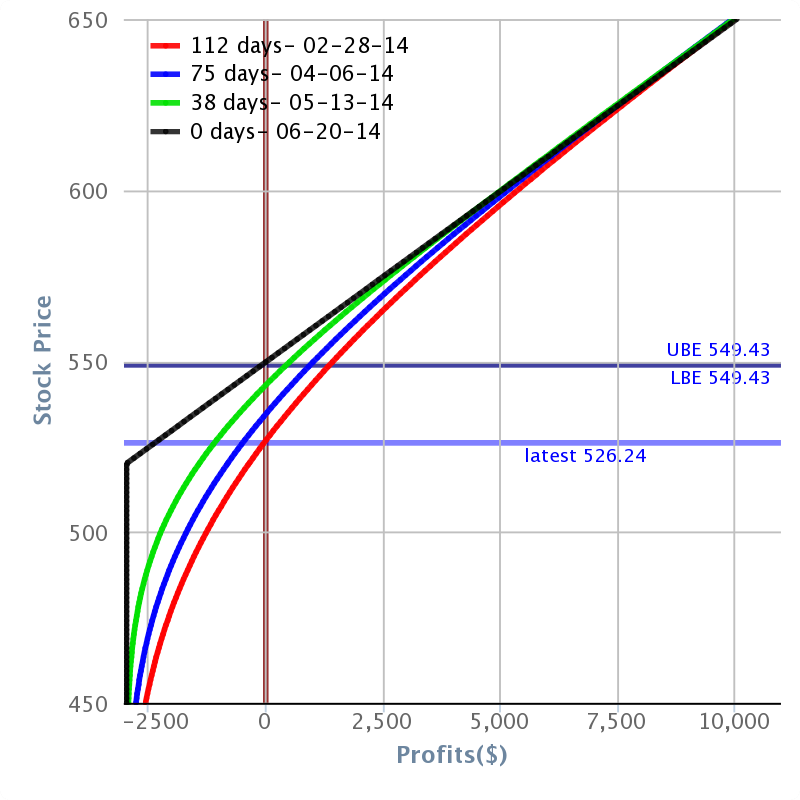Stock Option Valuation
Post on: 16 Март, 2015 No Comment

How to find the value of your employee stock options.
Knowing the value of your stock options can help you evaluate your compensation package and make decisions about how to handle your stock options.
Understanding Option Value
As explained more fully in our book Consider Your Options. the value of a stock option has two components. One part, called intrinsic value. measures the paper profit (if any) that’s built in at the time we determine the value. For example, if your option gives you the right to purchase stock at $10 per share and the stock is trading at $12, your option has an intrinsic value of $2 per share.
The option has additional value based on the potential for greater profit if you continue to hold the option. This part of the value varies depending on the amount of time until the option expires (among other factors), so it’s called the time value of the option. The value of a stock option is the sum of its intrinsic value and its time value.
It’s important to understand that option value is not a prediction, or even an estimate of the likely outcome from continuing to hold an option. Your option may have a value of $5 per share, but end up producing a profit of $25 per share — or no profit at all. Option value is useful information, but it doesn’t foretell the future.
Objective and Subjective Value
In theory, we can determine option value objectively using complicated formulas or procedures. In practice, the value that matters for people who hold employee stock options is the subjective value of the option: the value of the option to you. That’s why I recommend a simplified approach when determining the value of an employee stock option. For one thing, if your option’s expiration date is more than five years away, I would determine the value as if it expires in five years. The chances are pretty good that you won’t get the full benefit of a longer period of time. Also, I ignore any added value produced by high volatility. That’s a way of measuring how much the stock zigzags up and down. In theory, higher volatility means higher option value, but in practice it exposes you to a lot of risk, and that’s a negative factor that cancels out the higher value, in my opinion. For planning purposes, I nearly always determine the value of employee stock options as if the stock has moderate volatility, even if the actual volatility produces a higher theoretical value.
Valuation Shortcuts
These observations about subjective value allow us to use some shortcuts. The easiest one is for brand new options that have a life of five or more years. The option doesn’t have any intrinsic value yet because the exercise price is the same as the market value of the stock. If we ignore additional time beyond five years, and also ignore the value of high volatility, a newly issued option usually has a value close to 30% of the value of the stock.
Example: You receive an option to buy $800 shares of stock at $25 per share. The total value of the shares is $20,000, so the option value is around $6,000.
Remember, the theoretical value of the option may be quite a bit higher, but $6,000 is a reasonable figure for the value of the option to you .
If you’ve held your option for a while and the stock price has gone up, you need a slightly more complicated method to determine the option’s value. The official formula is truly mind-boggling, but the following procedure gives you a reasonable estimate:
- Subtract the exercise price of the stock option from the current value of the stock to determine the intrinsic value of the option.
- Multiply the exercise price of the stock option by 25%, to get an estimate of the five-year time value. Reduce that number proportionately if the option will expire in less than five years.
- Add the intrinsic value and the time value to get the total value of the stock option.

Example: Your option lets you buy stock at $10 per share. The stock is currently trading at $16, and the option will expire in four years.
The intrinsic value is $6 per share. The five-year time value would be $2.50 (25% of the $10.00 exercise price), but we reduce that number by one-fifth because the option will expire in four years. For this option, the intrinsic value is $6.00 per share and the time value is about $2.00 per share. The total value of the option at this point in time is about $8.00 per share.
Check your work: The time value of a stock option is always somewhere between zero and the exercise price of the option. A number outside that range indicates a mistake.
You probably won’t be able to do this calculation in your head, but it’s pretty easy with a calculator, and that’s more than we can say for the Black-Scholes formula. Bear in mind that here again we’re ignoring the added value of high volatility, so the theoretical value of a stock option may be higher than the number calculated using this simplified procedure.
Dividends
Dividends reduce the value of stock options, because option holders don’t receive dividends until after the exercise the option and hold the shares. If your company pays dividends, it makes sense to reduce the values calculated by the shortcut methods described above.
Need an Online Calculator?
There are a number of stock option value calculators on the Internet. Some are no good at all, but some are excellent — and free. My favorite is offered by IVolatility.com. Read our explanation first, then go to this page and look for a link to their Basic Calculator.
Start out by entering the symbol for your company’s stock in the box for symbol. For example, if you work for Intel, enter INTC. Ignore the box for style because that doesn’t matter for this type of option. The next box is for price, and it should already have a recent price for your company’s stock. You can leave it alone, or change it if you want to see the option value when the stock price is higher or lower.
The next box is for strike, which means the exercise price of your stock option. Enter that number and skip over expiration date, because you’re going to enter the number of days to expiration instead. Don’t worry about calculating the exact number of days; just figure the years or months and multiply by 365 or 30.
The next box is for volatility, and if you entered a good stock symbol, the number is already there. How cool is that? If the number is 30 or less, just accept it and move on. If it’s higher than 30, I’d be inclined to discount it to 30 in most cases because your options expose you to a lot of risk.
You can accept or change the values the calculator offers for interest rate and dividends. Normally there is no reason to change these items. Press calculate and after a moment you’ll see the value of the option (and lots of other stuff that will literally be Greek to you).
Note that this calculator gives the total value of your stock option. If your option is in the money (meaning the stock is trading at a price higher than the exercise price of the option), part of the value is intrinsic value and part is time value. Subtract the exercise price of the option from the trading price of the stock to get the intrinsic value. Then you can subtract the intrinsic value from the overall value to learn the time value of your stock option.














